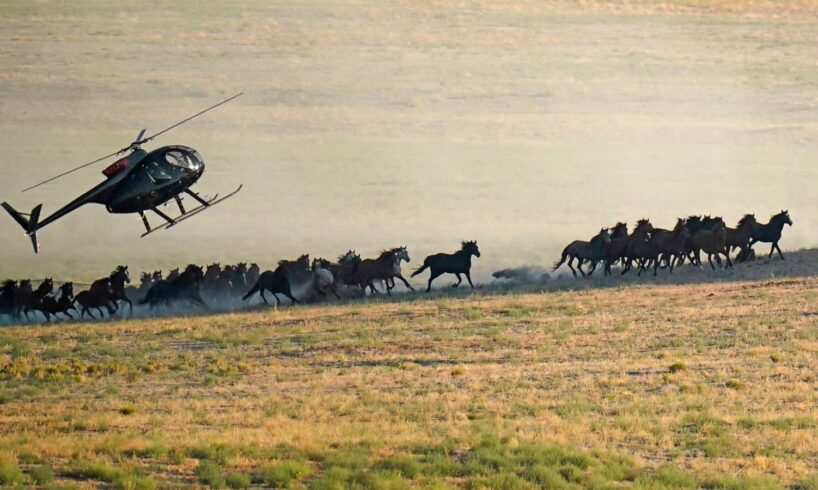
The federal agency tasked with managing wild horses and burros across the American West will now require compliance inspections as part of its animal adoption program.
The U.S. Bureau of Land Management’s (BLM) changes to its adoption incentive program for wild horses and burros will “enhance existing protections” for adopted animals, the agency said last week.
BLM will require compliance inspections within six months of an animal’s adoption, and title applications will need the approval of a veterinarian or “BLM-authorized officer” before incentive payments are sent to adopters.
“We have an unwavering commitment to the humane care and placement of America’s wild horses and burros. By and large, the Adoption Incentive Program has provided the boost people have needed to support their dream of adopting and appropriately caring for a wild horse or burro,” BLM Director Tracy Stone-Manning said in a statement. “As we further refine this successful program, I encourage all capable, potential adopters to give a wild horse or burro a good home.”
The BLM manages over 86,000 wild horses and burros that roam 27 million acres of public land in 10 western states, with Nevada accounting for nearly half of the population.
According to the agency, herd overpopulation is dangerous for horses – increasing the risk of starvation and thirst among widespread droughts – and can be detrimental to critical habitat. It plans on gathering 22,000 animals this year, removing 19,000 of those “excess” animals from the range. The remaining animals will be treated with some form of fertility control before being released back to their herds, the BLM said earlier this month.
Over 8,600 animals were adopted last year via the program, which offers eligible people $1,000 to adopt and board an animal. Proponents of the program argue it saves taxpayer dollars since boarding horses and burros off-range costs the federal government an estimated $50 million each year, while animal welfare groups argue the program needs more oversight and accountability for welfare violations.
Hannah Downey, policy director for the Bozeman, Montana-based Property and Environment Research Center, said the number of horses adopted has increased by 200% since the program’s start in 2019.
“This tremendous success story is a real credit to the bureau’s outstanding efforts to humanely address herd overpopulation, which will continue with these new refinements,” Downey said. “In addition to transferring over 8,000 animals out of federal holding facilities and into good homes, this creative market-based approach is helping to restore the ecological health of our public lands and saving taxpayers $24,000 per horse. These clear wins will compound over time and ensure a lasting benefit for generations.”
This article was originally posted on Federal land managers add compliance inspections to wild horse adoption program